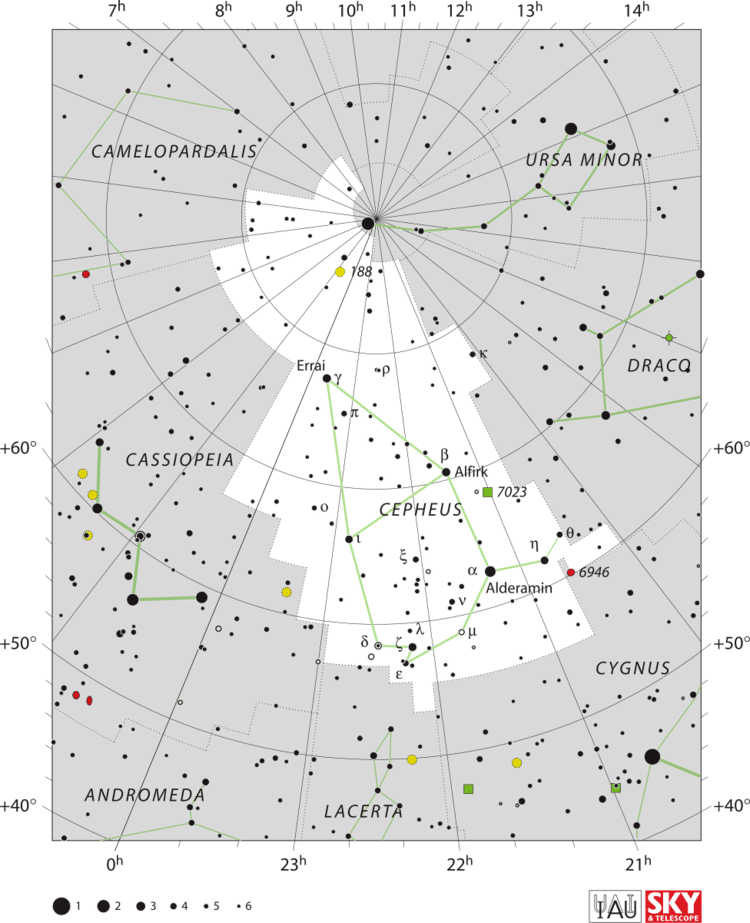Magnitude 3.426 Apparent magnitude (V) 3.426 | ||
 | ||
People also search for Iota Cephei, Zeta Cephei, Theta Cephei | ||
Eta cephei elite dangerous
Eta Cephei (η Cep, η Cephei) is a star in the northern circumpolar constellation of Cepheus. It shares the name Al Kidr with θ Cep, although the meaning of this name is unknown. This star, along with α Cep (Alderamin) and β Cep (Alfirk), were identified as Al Kawākib al Firḳ (الكوكب الفرق), meaning "the Stars of The Flock" by Ulug Beg. With an apparent visual magnitude of 3.4, this is a third magnitude star that, according to the Bortle Dark-Sky Scale, is readily visible to the naked eye. Parallax measurements put it at a distance of 46.53 light-years (14.27 parsecs) from Earth.
Contents
- Eta cephei elite dangerous
- Elitedangerous s beta 2 06 the impossible station at eta cephei
- Hunt for substellar objects
- References
In Chinese, 天鈎 (Tiān Gōu), meaning Celestial Hook, refers to an asterism consisting of η Cephei, 4 Cephei, HD 194298, θ Cephei, α Cephei, ξ Cephei, 26 Cephei, ι Cephei and ο Cephei. Consequently, η Cephei itself is known as 天鈎四 (Tiān Gōu sì, English: the Fourth Star of Celestial Hook.).
Eta Cephei is a subgiant star with a stellar classification of K0 IV, which indicates it is exhausting the supply of hydrogen at its core and is in the process of evolving into a giant star. With 1.6 times the Sun's mass, at an age of 2.5 billion years it has reached a radius four times larger than the Sun and a luminosity ten times greater. It is radiating this energy from its outer atmosphere at an effective temperature of 4,950 K, giving it the orange-hued glow of a K-type star. Eta Cephei has a high proper motion across the celestial sphere and a large peculiar velocity of 112 km s−1.
Elitedangerous s beta 2 06 the impossible station at eta cephei
Hunt for substellar objects
According to Nelson & Angel (1998), Eta Cephei would show two significant periodicities of 164 days and 10 years respectively, hinting at the possible presence of one or more jovian planets in orbit around the subgiant. The authors have set an upper limit of 0.64 Jupiter masses for the putative inner planet and 1.2 Jupiter masses for the putative outer one. Also Campbell et al. (1988) inferred the existence of planetary objects or even brown dwarfs less massive than 16.3 Jupiter masses.
However, more recent studies have not yet confirmed the existence of any substellar companion around Eta Cephei. McDonald Observatory team has set limits to the presence of one or more planets with masses between 0.13 and 2.4 Jupiter masses and average separations spanning between 0.05 and 5.2 AU.
